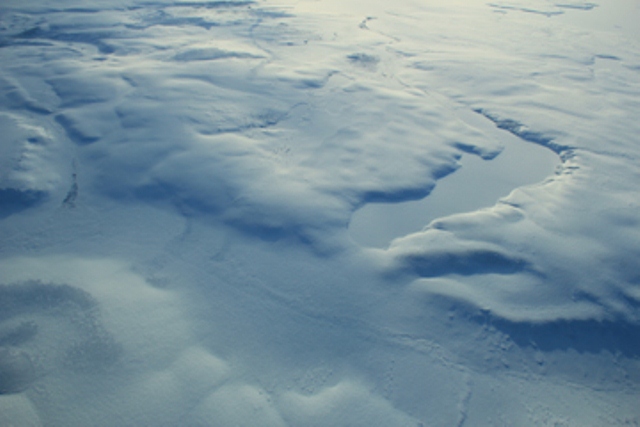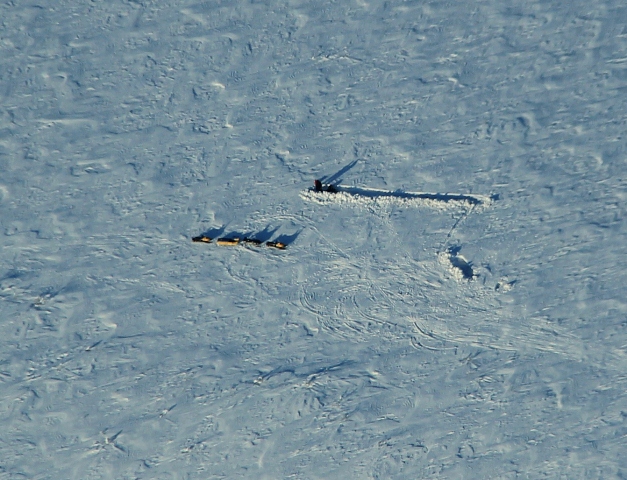From Chris Derksen (Environment Canada), 14 March 2013
After a strong blowing snow event on 12 March, clear and calm conditions provided a great window for SnowSAR science flights out of Inuvik, Northwest Territories on 13 and 14 March. Both were ideal days for flying: –25°C, clear skies, and very calm. A photo from the Cessna-208 shows the stark beauty of this Arctic landscape.
The calm conditions were also welcomed by the ground team making final adjustments to the 12 corner reflectors used to calibrate the airborne radar measurements.
In addition to the flight activities, there are currently seven personnel based out of a small cabin approximately 70 km from the town of Inuvik. This may not sound far, but when pulling full loads this trip takes about four hours by snowmobile.
The cabin is about 10 km from the study site, so the scientists commute daily from there. The ground survey team are continuing to conduct snow-depth transects, make snowpit measurements, conduct a ground-based LiDAR survey, and deploy a sled-based ground penetrating radar.
In this photo taken from the aircraft, you can see two scientists excavating a 50 m snow trench to determine the spatial variability in individual layers within the snowpack.
This is an international project, with participants from Canada, the United States, England, and Finland. They are reporting excellent progress on the ground, with the only issue that one of the areas sampled intensively during ground measurements in December was subsequently trampled by a herd of caribou!
The ground team will continue their measurements until Monday, before packing up and returning to town. There will be only a short pause, before a second set of flights in early April.
These flights are the culmination of many months of planning. The ground measurements will be used to interpret the radar signal over snow covered tundra. Snow water equivalent estimates produced from the airborne radar will be compared both to ground measurements, and a distributed hydrological model run over the study area by Environment Canada.
This is a busy time in the campaign – we will post more photos from the field camp in a few days!











Discussion: no comments